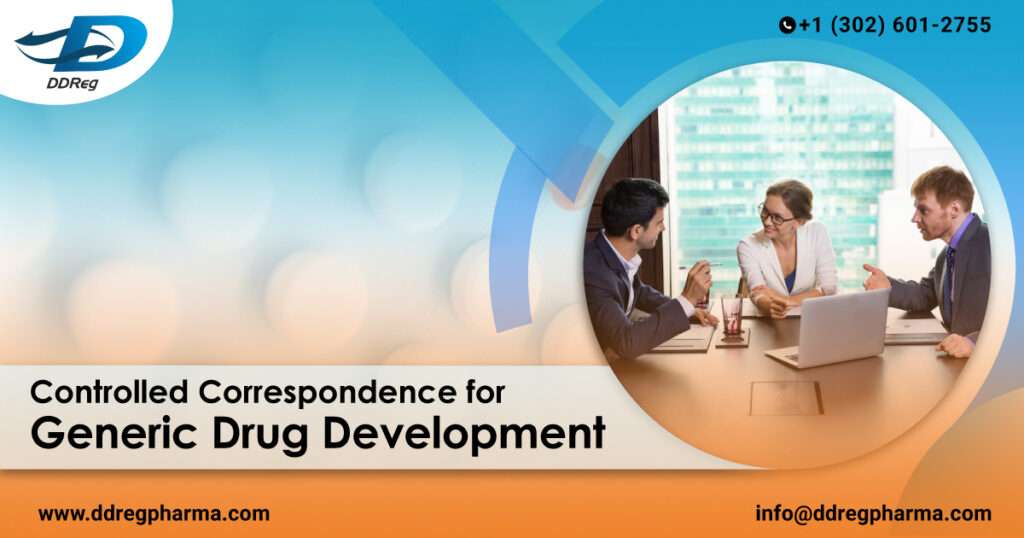Regulatory agencies across the globe are committed to ensuring that patients and the public have timely access to safe, effective, and high-quality medicines. They make significant developments, be it revision of guidelines to provide industry with robust support & guidance or expediting review and response times. Recently, the US FDA issued a guidance document for controlled correspondence incorporating new enhancements with the aim to improve the utility and efficiency of abbreviated new drug applications (ANDA) assessment cycles. The US FDA aims to decrease the number of ANDA assessment cycles and ensure timely access to generic medicines.
Why is Controlled Correspondence important?
Controlled correspondence serves as a critical avenue for communication between generic drug manufacturers or related industry stakeholders and the United States Food and Drug Administration (FDA) that occurs before an ANDA submission. It enables the entities to seek guidance and clarification on specific elements of generic drug product development.
Recently, FDA revised the guidance for Controlled Correspondence Related to Generic Drug Development outlining the process for generic drug manufacturers to submit controlled correspondence to the FDA for information related to generic drug development. It replaces the previous guidance from December 2020 and includes enhancements agreed upon during the reauthorization negotiations for the Generic Drug User Fee Amendments (GDUFA III). The FDA aims to respond to 90% of level 1 controlled correspondence within 60 days and 90% of level 2 correspondence within 120 days. Furthermore, it outlines level 1 and level 2 controlled correspondence and provides recommendations for submission and response procedures.
Understanding Controlled Correspondence Guideline
According to US FDA, Controlled correspondence is a communication submitted to FDA by or on behalf of a generic drug manufacturer or related industry requesting information on a specific element of generic drug product development.
Controlled correspondence serves as a structured mechanism for generic drug manufacturers and related industry representatives to seek clarification and guidance from the FDA on specific aspects of generic drug development. Unlike general correspondence, controlled correspondence requires detailed information and is intended to facilitate the development process by addressing specific inquiries related to potential or actual Abbreviated New Drug Application (ANDA) submissions.
Key Points Covered in the Guidance
- Content of Controlled Correspondence: The guidance emphasizes the importance of submitting controlled correspondence on corporate letterhead, including specific details about the requester, timely dating, and providing sufficient information to enable the FDA to respond effectively.
- Submission Process: Requestors are encouraged to submit controlled correspondence electronically through the CDER Direct NextGen Collaboration Portal, ensuring efficient communication and tracking of inquiries. Content requirements for a controlled correspondence include specific details like contact information, previous related correspondence (if any), relevant drug information, and a concise statement of the inquiry.
- Enhancements and Changes: The updated guidance incorporates program enhancements committed to by the FDA and industry stakeholders, providing additional recommendations for specific types of inquiries and clarifying the types of inquiries suitable for submission as controlled correspondence.
- Nonbinding Recommendations: The guidance underscores that FDA recommendations are nonbinding and should be viewed as suggestions, highlighting the collaborative nature of the controlled correspondence process.
- Significance of Effective Communication: Effective communication by means of controlled correspondence is crucial in expediting the process of development of generic drugs, enhancing the regulatory compliance and finally leading to availability of safe and affordable generics for patients. Controlled correspondence promotes openness, lucidity, and effectiveness in dealing with regulators through a well-organized manner of seeking scientific and regulatory advice.
Conclusion
“Controlled Correspondence Related to Generic Drug Development” guidance is a big stride forward in improving communication and collaboration in the generic drug industry. Through the guidance, stakeholders can better negotiate their way through the regulatory maze, request advice from FDA when necessary and help towards making quality generic drugs available. The principles of controlled correspondence if embraced can lead to better regulatory outcomes, increased efficiency in drug development processes; thus benefiting patients globally.
DDReg has supported its customers for the US market by providing end-to-end regulatory services for generic product development and ANDAs. Read more from the experts about generic products: Model-Integrated Evidence Program for Generic Drugs

